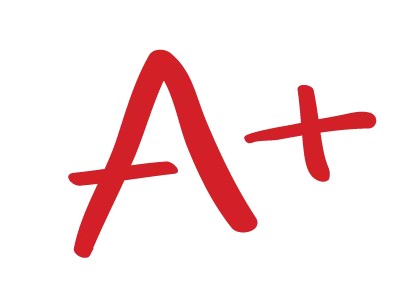Managing organizations and leading people task 2
Introduction:
WRITE THIS ESSAY FOR ME
Tell us about your assignment and we will find the best writer for your paper.
Get Help Now!For this task, you will conduct an evaluation of your personal leadership style. You will write a 6-10 page paper evaluating your own leadership practices using a scholarly leadership theory that is different from the one you used in task 1. To help you refine your own leadership skills, you will develop at least two SMART (specific, measurable, achievable, realistic, and timely) goals as part of your evaluation.
Requirements:
A. Conduct a leadership evaluation of your own leadership by doing the following:
1. Provide a completed copy of the attached “Seven Habits Profile.”
Note: You will be required to attach a completed copy of the “Seven Habits Profile” to the task submission. The attachment may be a scanned document or photo.
a. Reflect on the results of your Seven Habits Profile, including what those results might indicate about your leadership style.
2. Evaluate your leadership practice by doing the following:
Note: As part of your evaluation, you will need to use one scholarly leadership theory and three scholarly sources.
a. Evaluate three strengths of your leadership practice using a scholarly leadership theory.
Note: You should use a leadership theory that is different from the leadership theory you used in task 1.
b. Evaluate three weaknesses of your leadership practice using the same scholarly leadership theory you used in part A2a.
c. Recommend three theory-based changes that you could make to maximize your success in managing organizations and leading people in the future, using the same scholarly leadership theory you used in part A2a.
Note: All theories must be supported.
d. Discuss two short-term SMART goals that will help improve your leadership practice.
Note: All the components of the SMART model must be met for each goal. This model required objectives to be: (a) specific, (b) measurable, (c) achievable or attainable, (d) realistic or relevant, and (e) time-bound or time-based.
i. Discuss at least two specific actions you will take to reach each of the SMART goals discussed in part A2d.
e. Include three scholarly sources that support your evaluation of your own leadership practice.
Note: A scholarly source could be a reputable journal, a published book, any source from a university faculty member or business leader. Also, any article or book in the online WGU library.
B. When you use sources, include all in-text citations and references in APA format.
Note: For definitions of terms commonly used in the rubric, see the Rubric Terms web link included in the Evaluation Procedures section.
Note: When using sources to support ideas and elements in an assessment, the submission MUST include APA formatted in-text citations with a corresponding reference list for any direct quotes or paraphrasing. It is not necessary to list sources that were consulted if they have not been quoted or paraphrased in the text of the assessment.
Note: No more than a combined total of 30% of a submission can be directly quoted or closely paraphrased from outside sources, even if cited correctly. For tips on using APA style, please refer to the APA Handout web link included in the APA Guidelines section.
Rubric:
rticulation of Response (clarity, organization, mechanics)
The candidate provides unsatisfactory articulation of response. The candidate provides weak articulation of response. The candidate provides limited articulation of response. The candidate provides adequate articulation of response. The candidate provides substantial articulation of response.
A1. Copy of “Seven Habits Profile”
The candidate does not provide a completed copy of the attached “Seven Habits Profile.” Not applicable. Not applicable. Not applicable. The candidate provides a completed copy of the attached “Seven Habits Profile.”
A1a. Reflection on Seven Habits Profile
The candidate does not provide a relevant reflection on the results of the Seven Habits Profile, including what the results might indicate about the candidate’s leadership style. The candidate provides a relevant reflection, with no detail, on the results of the Seven Habits Profile, including what the results might indicate about the candidate’s leadership style. The candidate provides a relevant reflection, with limited detail, on the results of the Seven Habits Profile, including what the results might indicate about the candidate’s leadership style. The candidate provides a relevant reflection, with adequate detail, on the results of the Seven Habits Profile, including what the results might indicate about the candidate’s leadership style. The candidate provides a relevant reflection, with substantial detail, on the results of the Seven Habits Profile, including what the results might indicate about the candidate’s leadership style.
A2a. Personal Leadership Strengths
The candidate does not provide a logical evaluation of any strengths of the candidate’s leadership practice using a scholarly leadership theory. The candidate provides a logical evaluation of 1–2 strengths of the candidate’s leadership practice using a scholarly leadership theory. The candidate provides a logical evaluation, with limited support, of 3 strengths of the candidate’s leadership practice using a scholarly leadership theory. The candidate provides a logical evaluation, with adequate support, of 3 strengths of the candidate’s leadership practice using a scholarly leadership theory. The candidate provides a logical evaluation, with substantial support, of 3 strengths of the candidate’s leadership practice using a scholarly leadership theory.
A2b. Personal Leadership Weaknesses
The candidate does not provide a logical evaluation of any weaknesses of the candidate’s leadership practice using the same scholarly leadership theory used in part A2a. The candidate provides a logical evaluation of 1–2 weaknesses of the candidate’s leadership practice using the same scholarly leadership theory used in part A2a. The candidate provides a logical evaluation, with limited support, of 3 weaknesses of the candidate’s leadership practice using the same scholarly leadership theory used in part A2a. The candidate provides a logical evaluation, with adequate support, of 3 weaknesses of the candidate’s leadership practice using the same scholarly leadership theory used in part A2a. The candidate provides a logical evaluation, with substantial support, of 3 weaknesses of the candidate’s leadership practice using the same scholarly leadership theory used in part A2a.
A2c. Recommendation for Personal Leadership
The candidate does not provide an appropriate recommendation of any theory-based changes to maximize success in managing organizations and leading people in the future, using the same scholarly leadership theory used in part A2a. The candidate provides an appropriate recommendation of 1–2 theory-based changes to maximize success in managing organizations and leading people in the future, using the same scholarly leadership theory used in part A2a. The candidate provides an appropriate recommendation, with limited support, of 3 theory-based changes to maximize success in managing organizations and leading people in the future, using the same scholarly leadership theory used in part A2a. The candidate provides an appropriate recommendation, with adequate support, of 3 theory-based changes to maximize success in managing organizations and leading people in the future, using the same scholarly leadership theory used in part A2a. The candidate provides an appropriate recommendation, with substantial support, of 3 theory-based changes to maximize success in managing organizations and leading people in the future, using the same scholarly leadership theory used in part A2a.
A2d. SMART Goals
The candidate does not provide a logical discussion of any short-term SMART goals that will help improve the candidate’s leadership practice. The candidate provides a logical discussion of 1 short-term SMART goal that will help improve the candidate’s leadership practice. The candidate provides a logical discussion, with limited detail, of 2 short-term SMART goals that will help improve the candidate’s leadership practice. The candidate provides a logical discussion, with adequate detail, of 2 short-term SMART goals that will help improve the candidate’s leadership practice. The candidate provides a logical discussion, with substantial detail, of 2 short-term SMART goals that will help improve the candidate’s leadership practice.
A2di. Specific Actions
The candidate does not provide a logical discussion of any specific actions that will be taken to reach each of the SMART goals discussed in part A2d. The candidate provides a logical discussion, with no detail, of at least 2 specific actions that will be taken to reach each of the SMART goals discussed in part A2d. The candidate provides a logical discussion, with limited detail, of at least 2 specific actions that will be taken to reach each of the SMART goals discussed in part A2d. The candidate provides a logical discussion, with adequate detail, of at least 2 specific actions that will be taken to reach each of the SMART goals discussed in part A2d. The candidate provides a logical discussion, with substantial detail, of at least 2 specific actions that will be taken to reach each of the SMART goals discussed in part A2d.
A2e. Scholarly Sources for Self-Evaluation
The candidate does not provide any scholarly sources to support the evaluation of the candidate’s leadership practice. Not applicable. The candidate provides 1–2 scholarly sources to support the evaluation of the candidate’s leadership practice.
Not applicable. The candidate provides 3 scholarly sources to support the evaluation of the candidate’s leadership practice.
B. Sources
When the
candidate
uses sources,
the candidate
does not
provide in-text
citations
and references. When the
candidate
uses sources,
the candidate
provides only
some in-text
citations
and
references. When the
candidate
uses sources,
the candidate
provides
appropriate
in-text
citations
and
references
with major
deviations
from APA
style. When the
candidate
uses sources,
the candidate
provides
appropriate
in-text
citations
and
references
with minor
deviations
from APA
style. When the
candidate
uses
sources, the
candidate
provides
appropriate
in-text
citations
and
references
with no
readily
detectable
deviations
from APA
style, OR
the
candidate
does not use
sources.
Attachments:
Introducing our Online Essay Writing Services Agency, where you can confidently place orders for a wide range of academic assignments. Our reputable homework writing company specializes in crafting essays, term papers, research papers, capstone projects, movie reviews, presentations, annotated bibliographies, reaction papers, research proposals, discussions, and various other assignments. Rest assured, our content is guaranteed to be 100% original, as every piece is meticulously written from scratch. Say goodbye to concerns about plagiarism and trust us to deliver authentic and high-quality work.



